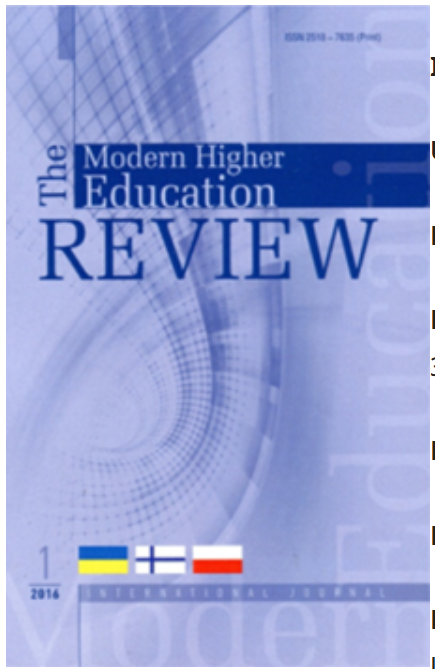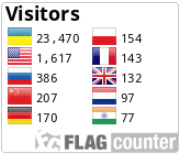CHALLENGES AND INNOVATIONS IN SCIENTIFIC AND TECHNICAL TRANSLATION: TERMINOLOGICAL COMPLEXITIES AND ‘FALSE FRIENDS’
DOI:
https://doi.org/10.28925/2617-5266/2024.97Keywords:
international cooperation, polysemy, scientific terminology, synonymy, translation challengesAbstract
This article explores the dynamic changes in scientific and technical terminology at the start of the 21st century, driven by global advancements in science, technology, and international cooperation. The focus is on the complexities faced by translators in identifying, characterizing, and translating new terms, especially those complicated by ‘false friends of translators.’ The study analyses the processes of terminology formation, the polysemy of terms, and the challenges posed by synonymy and the absence of equivalent terms in the target language. The research employs methods such as literature review, comparative analysis, and lexical-semantic analysis to understand the formation and usage of terminology in English and Ukrainian. It also highlights the influence of English on global terminological vocabulary, particularly in economic and computer sciences. The article emphasizes the importance of accurate translation in scientific communication and suggests strategies for improving translation practices through standardization, training, and collaboration. This research aims to contribute to the ongoing development and standardization of Ukrainian scientific and technical terminology, ensuring clarity, precision, and effective communication in specialized fields.
Downloads
References
Balliu, C. (2013). Training translation students to understand medical texts: some reflections.Panacea-Boletin de Medicina y Traduccion, 14(38), 275-279
Belozerskaya, L., Voznenko, N., & Radetska, S. (2010). Terminology and translation [Термінологія та переклад]. Kherson: MONU, Kherson National Technical University – Vinnytsya: NEW BOOK.
Bowker, L. (2020). Terminology management. In G. Massey, M. Ehrensberger-Dow, & E. Angelone (Eds.), The Bloomsbury companion to language industry studies (pp. 261–283). London: Bloomsbury. https://doi.org/10.5040/9781350024960.0016
Boyko, S.A., & Koltsova, E.A. (2023). Teaching English for special purposes to bachelors of engineering and technology: Corpus approach and terminological units. European Journal of Contemporary Education, 12(1), 28-39, https://doi.org/10.13187/ejced.2023.1.28
Conference of Translation Services of European States Working Party on Terminology and Documentation. (2002). Recommendations for terminology work (2nd rev. and enlarged ed.). Media Center of the Confederation.
Dyakov, О., Kyyak, T., & Kudelko, Z. (2000). Basics of term formation: Semantic and sociolinguistic aspects [Основи термінотворення: семантичні та соціолінґвістичні аспекти] [Monograph]. Kyiv: KM Academia. http://irbis-nbuv.gov.ua/ulib/item/UKR0009600
Faber, P., & Cabezas-García, M. (2019). Specialized knowledge representation: From terms to frames. Research in Language, 17(2), 261–283. https://doi.org/10.18778/1731-7533.17.2.06
Geeraerts, G. (2015). Handbook of terminology online (Vol. 1, pp. xvii–xx). John Benjamins Publishing. https://doi.org/10.1075/hot.1.foreword
Hacken, P. (2010). The tension between definition and reality in terminology. In A. Dykstra & T. Schoonheim (Eds.), Proceedings of the XIV Euralex International Congress (pp. 915–927). Ljouwert: Fryske Akademy. https://euralex.org/elx_proceedings/Euralex2010/083_Euralex_2010_5_HACKEN_The%20Tension%20between%20Definition%20and%20Reality%20in%20Terminology.pdf
Harya, T. D. (2016). Language change and development: Historical linguistics. Premise: Journal of English Education, 5(1), 103–117. https://doi.org/10.24127/pj.v5i1.418
Horot, E. I., Kotsiuk, L. M., Malimon, L. K., & Pavliuk, A. B. (2006). Anhlo-ukrainskyi slovnyk [English-Ukrainian dictionary]. Vinnytsia: Nova Knyha.
ISO 1087. (2019). Terminology work and terminology science – Vocabulary. International Organization for Standardization. https://www.iso.org/standard/62330.html
Killman, J., (2018). Applicability of EU multilingual resources: A case study of the translation into English of legal vocabulary in the judicial context of Spain. Babel-Revue Internationale De La Traduction-International Journal of Translation, 63, 861-889, https://doi.org/10.1075/babel.00018.kil
McArthur, T. (1992). Longman lexicon of contemporary English. Pearson PTR.
Mospan, N. (2023). Language patterns in English language teaching: Virtual educational discourse. Continuing Professional Education: Theory and Practice, 2(75), 33–42. https://doi.org/10.28925/1609-8595.2023.2.4
Pavel, S., & Diane, N. (2001). Handbook of terminology. Adapted into English by Christine Leonhardt. Hull, Québec: Minister of Public Works and Government Services Canada, Translation Bureau. https://publications.gc.ca/collections/Collection/S53-28-2001E.pdf
Radetska, S., & Mazur, O. (2023). Content-based approach in teaching technical and scientific translation. The Modern Higher Education Review, 8, 157–169. https://doi.org/10.28925/2518-7635.2023.814
Roydon Publishing Co. (1985). The Roydon Encyclopedia Thousands of Facts. Roydon Publishing Co. Ltd.
Strongman, L. (2017). Language evolution, acquisition, adaptation and change. In X. Jiang (Ed.), Sociolinguistics: Interdisciplinary perspectives (1st ed., pp. 17–31). InTech. https://doi.org/10.5772/67767
Sysoieva S., & Mospan N. (2018). Concept of competence in the international and national educational contexts. Неперервна професійна освіта: теорія і практика, 1-2 (54-55), 7–15. https://doi.org/10.28925/1609-8595.2018(1-2)715
Tatu, O. (2016). Consistency in specialized translation or the path to reliable terminological data. 12th Conference on British And American Studies: Multidisciplinary Approaches to the Construction of Meaning, 83-104
Zahnytko, A., & Danyliuk, Y. (2012). Velykyi suchasnyi anhlo-ukrainskyi, ukrainsko-anhliiskyi slovnyk [Large modern English-Ukrainian, Ukrainian-English dictionary]. Donetsk: BAO. [in Ukrainian]
Published
How to Cite
Issue
Section
License
Copyright (c) 2024 The Modern Higher Education Review

This work is licensed under a Creative Commons Attribution-NonCommercial 4.0 International License.













